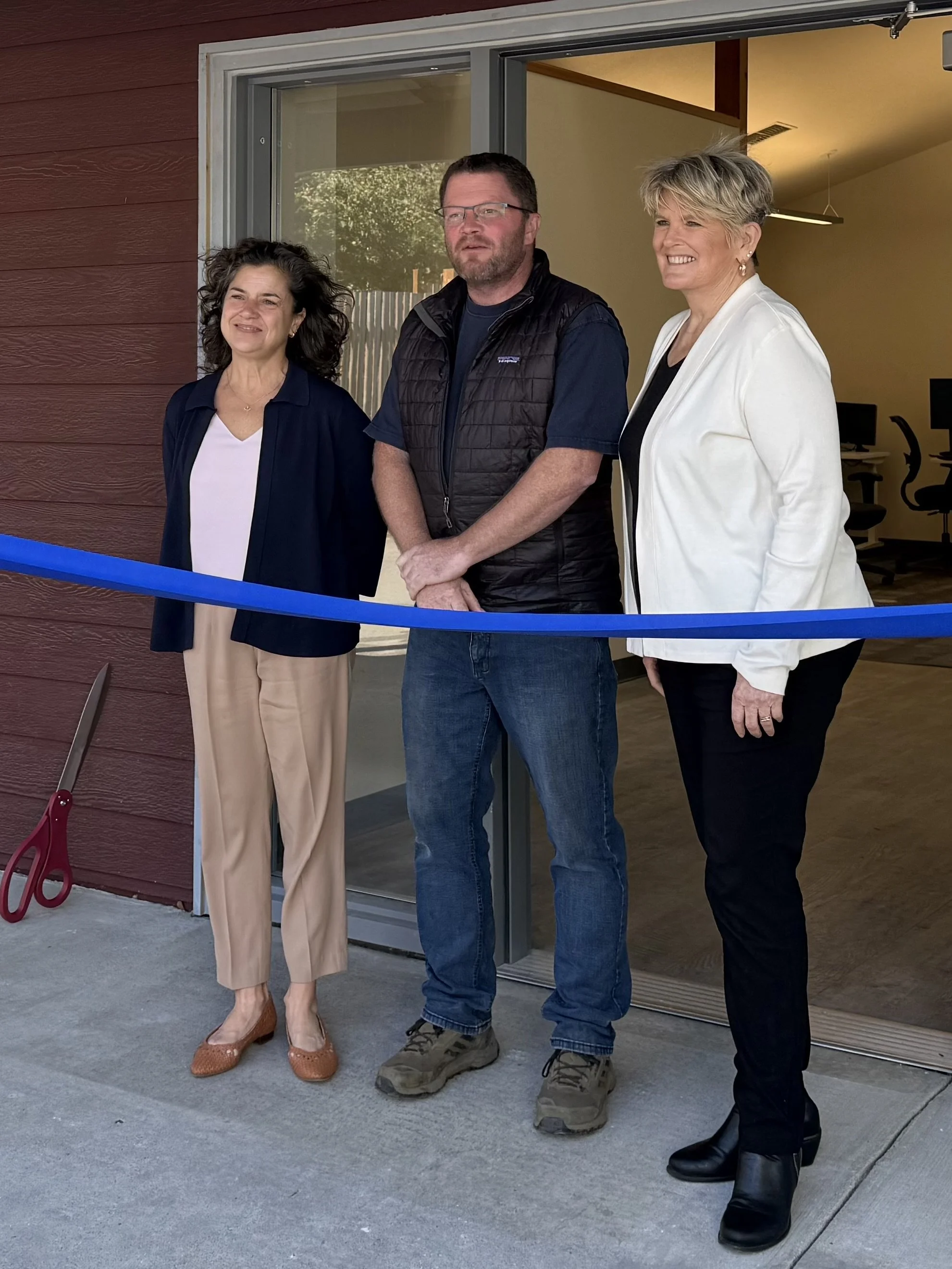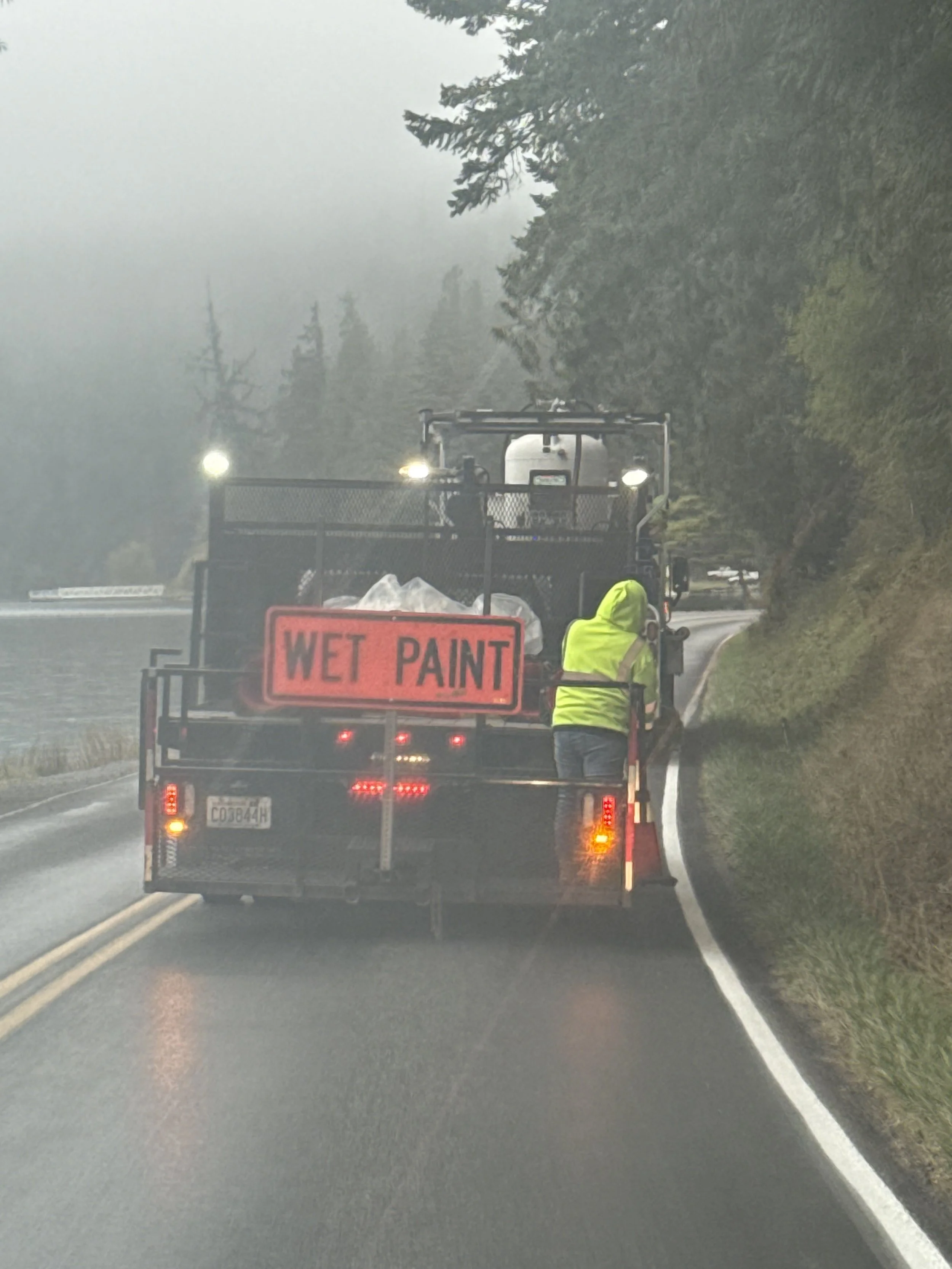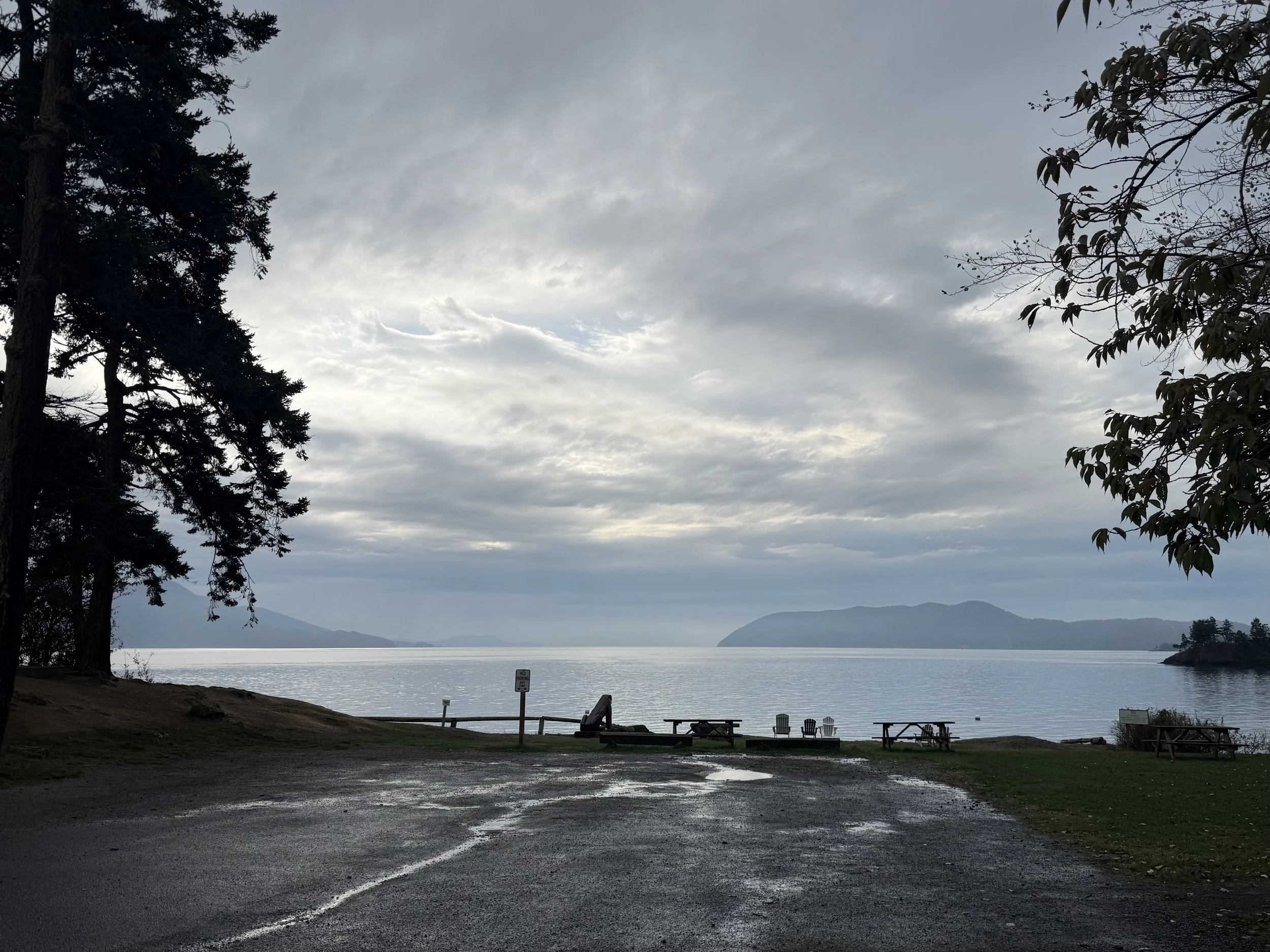Before the Door Closes
Autumn Dispatch from Island Stewards
Dear Neighbors,
We’ve spent the past months doing what islanders do best — paying attention.
To ferry lines that lengthened again this summer. To parking lots that overflowed while long-time residents searched for a place to live — or simply to breathe. To cedars shedding heavily at the end of summer — some calling it “normal,” even as water is drawn deep from aquifers that remember it is not.
And to the ongoing drafting of the Comprehensive Plan, where every one of these signs — housing, water, transportation, and livability — is written between the lines.
These are not isolated concerns. They are symptoms of a system asking too much of a place that already gives more than it should.
Before the Shutdown, We Knocked on the Right Doors
Before the recent government shutdown, Island Stewards filed the necessary papers and met with state and federal partners to keep the conversation open — literally and figuratively — about what support small, ferry-dependent islands need right now.
We asked:
Where can our communities find relief and resources before the fabric of island life stretches past repair?
Where can funding align with stewardship, not sprawl — supporting the village-scale living that keeps island life intact?
And most urgently: can transportation — thoughtfully designed, rooted in local values — help us hold the line?
These conversations mattered because our time already carries the cost that funding should match. In a world where nature has become a commodity, choosing to live here is the investment — and it deserves to be met with shared support, not sacrifice.
Why Transportation Matters Now
This fall, we’re not talking about transit for its own sake. We’re talking about connection as infrastructure.
Could a shared, small-scale transportation system help relieve pressure on our roads, ferries, and ecosystem?
Could it make it easier for residents to get to work, to school, to markets — and to the meetings where decisions get made?
Could it be the bridge that keeps civic life reachable for everyone, not just those who can afford the time to get there?
We believe it’s possible. We’ve been doing the groundwork — mapping needs, talking with agencies, identifying the funding paths that keep local control intact. But to design something truly resilient, we have to look beyond the vehicle to the ecosystem it moves through. Transportation is the first thread in a larger web — one that connects how we live, build, work, and care for the islands themselves. And that brings us to the question underneath it all: how much can these islands carry, and how do we measure enough?
Carrying Capacity | The Measure of Enough
We’re not done talking about carrying capacity—because it’s the question that ties every other question together. It isn’t a limit. It’s a compass. A way of seeing when growth, tourism, and infrastructure begin to ask more of these islands than they can give back.
Across the islands, many sectors are calling people to the table — housing, water, energy, tourism, and transit — each trying to solve their own piece of the problem. But when those efforts stay separate, the strain falls hardest on those already giving the most.
If we can connect these conversations and see how they overlap, better options will emerge —ones that share the weight and strengthen the whole. That’s why Island Stewards has applied for funding to integrate ArcGIS mapping into our work. It’s another tool to help us visualize what’s happening not as abstract numbers, but as a living landscape of cause and effect. When we can see together, we can plan together.
This winter marks the start of that process. We’ll begin layering community input, ecological data, and infrastructure realities into one shared map. But tools are only as powerful as the people who use them. Will you participate? Your stories, expertise, and perspective will shape what this map becomes—a community-made picture of how we live within our means while keeping the islands whole.
Because carrying capacity isn’t about limits; it’s about direction—pointing us toward
The Ecology of Enough, where balance replaces scarcity, and stewardship becomes our common ground.
The work is growing — and so are we.
Island Stewards has moved from listening to linking: connecting sectors, data, and people who might not otherwise find each other. The questions we’ve been asking — about transportation, housing, water, and the ecology of enough — are not separate issues. They’re threads in one fabric, and we’re beginning to stitch them together.
This next phase will take more than dedication; it will take capacity. We’re building the foundation to sustain this work year-round — from winter mapping and Table Talks to new partnerships with local, state, and federal agencies.
But to do it well, we need help.
We’re inviting people to join us:
Board Members who can guide strategy, planning, communications, and community engagement.
Volunteers and Collaborators — storytellers, educators, designers, researchers, farmers, data folks, artists, and bridge-builders.
Recommendations — tell us who you trust, who’s ready to lead, and who might want to help shape the next stage of Island Stewards.
Your insight can grow this network in ways we can’t predict from a spreadsheet.
And yes — donations matter too. They keep this work local, grounded, and responsive. Every contribution, no matter the size, helps cover the costs between grants and ensures we can keep showing up for the islands we love.
To those already carrying the hard work — thank you.
You are the reason the conversations continue, the reason hope still feels practical. As we move into winter’s planning season, we’ll keep asking the same question we ask of the land: How can we help you and your community thrive?
Together, we can keep the balance — of people, place, and purpose — that makes these islands whole.
Still Listening, Still Learning
As this work grows, so does the data behind it. The surveys you’ve filled out, the stories you’ve shared, and the ideas you’ve offered are all being woven into a clearer picture of what these islands need — not someday, but now.
The information we collect isn’t sitting on a shelf; it’s already helping shape local planning conversations, informing grant proposals, and strengthening our case for funding that values stewardship over sprawl. Your input continues to matter — and the surveys remain open for those who haven’t yet had their say.
If you haven’t participated yet, now is the time. Add your name, your experience, your perspective — they’re all part of the map we’re building together.
Take part and share the links below:
Petition: show support for transportation feasibility funding.
Local Survey: tell us how island life feels from where you stand.
Visitor Survey: https://forms.gle/ULggXq2VJdGyRuoG9
Feasibility Survey (for organizations or those who want to help plan): shape how we design and sustain solutions. https://forms.gle/GwCCRbSFaweQmSCu6
Goldilocks Surveys — Quick & Deeper Dive: explore what “just right” means for island growth and livability. https://forms.gle/gKPw15ar7YA1gP688
Your participation helps ensure that the next round of decisions — local, regional, or federal — reflects the reality of the people who live it.
Because the only way to measure enough is together.
In stewardship,
The Island Stewards Team
P.S.
On a personal note — thank you to those who took part in the recent flotilla, and to one of our own residents who made the journey and is now safely home. While much of my time has been spent fighting for funding and community support here, following that effort reminded me how deeply connected courage and stewardship really are.
You helped many of us remember that bravery isn’t loud — it’s steady.
Thank you for standing up, for showing up, and for reminding us how lucky we are to live in a community that still believes in care as a form of action.




